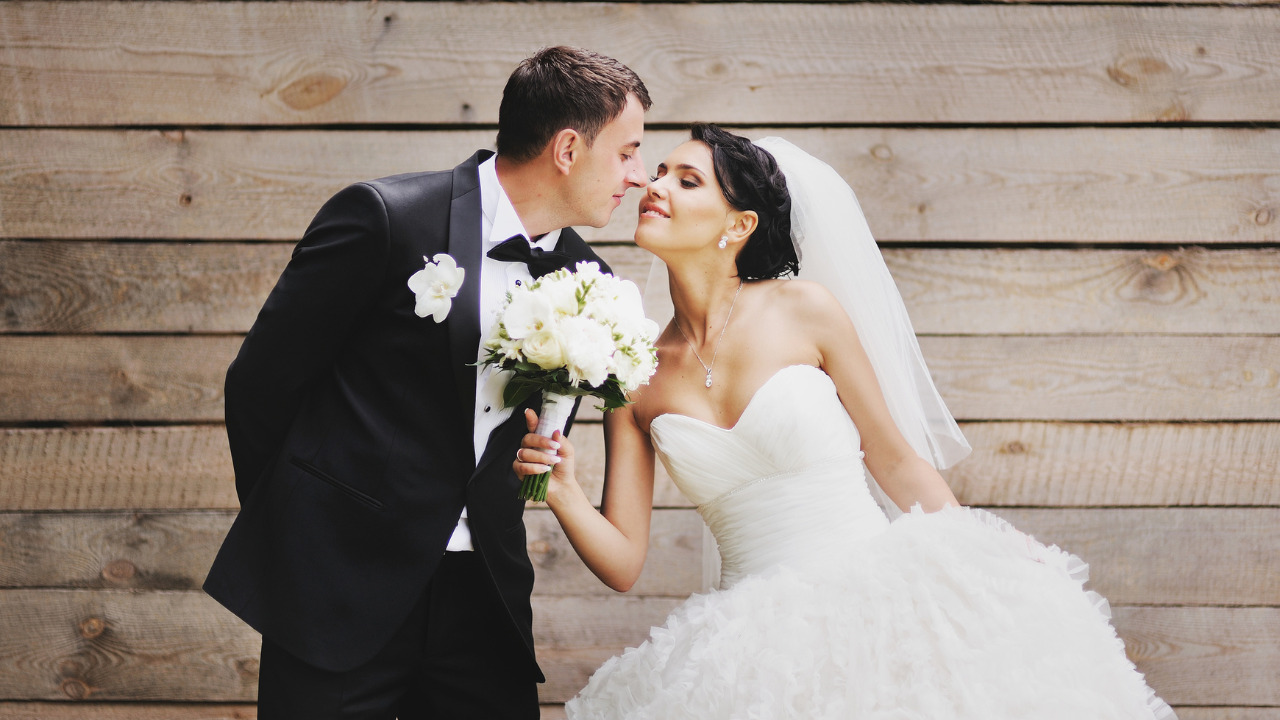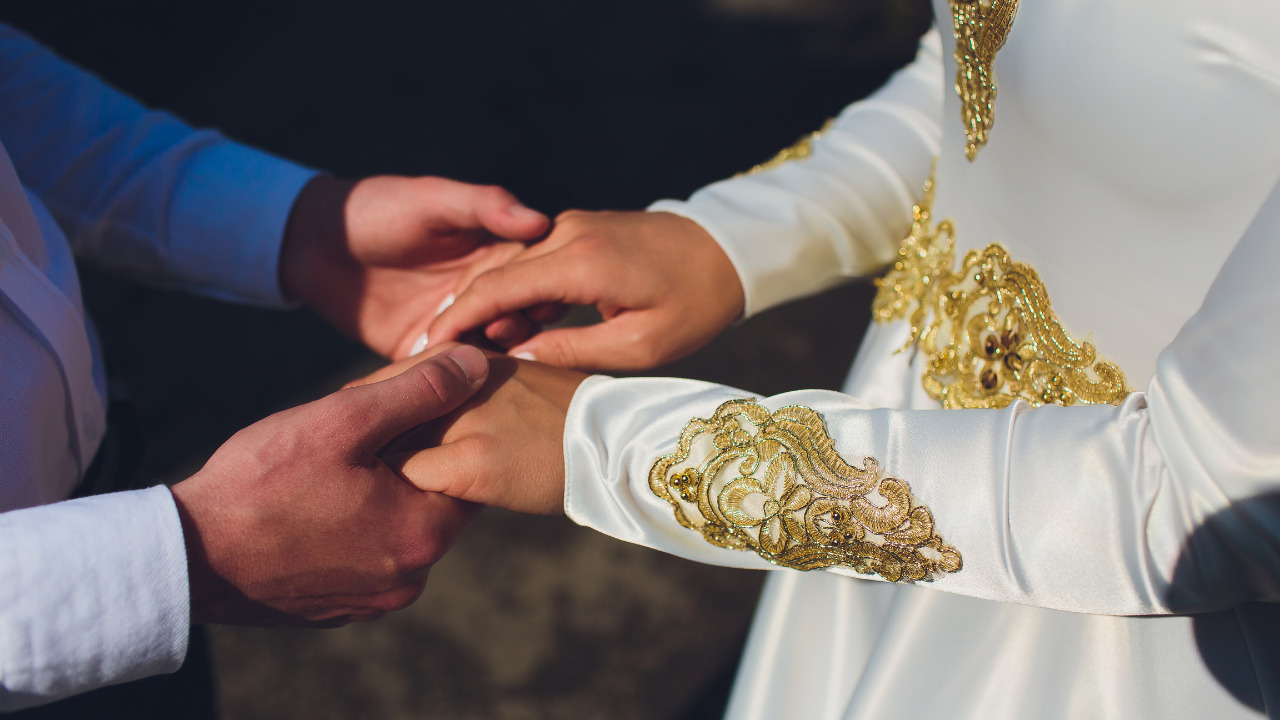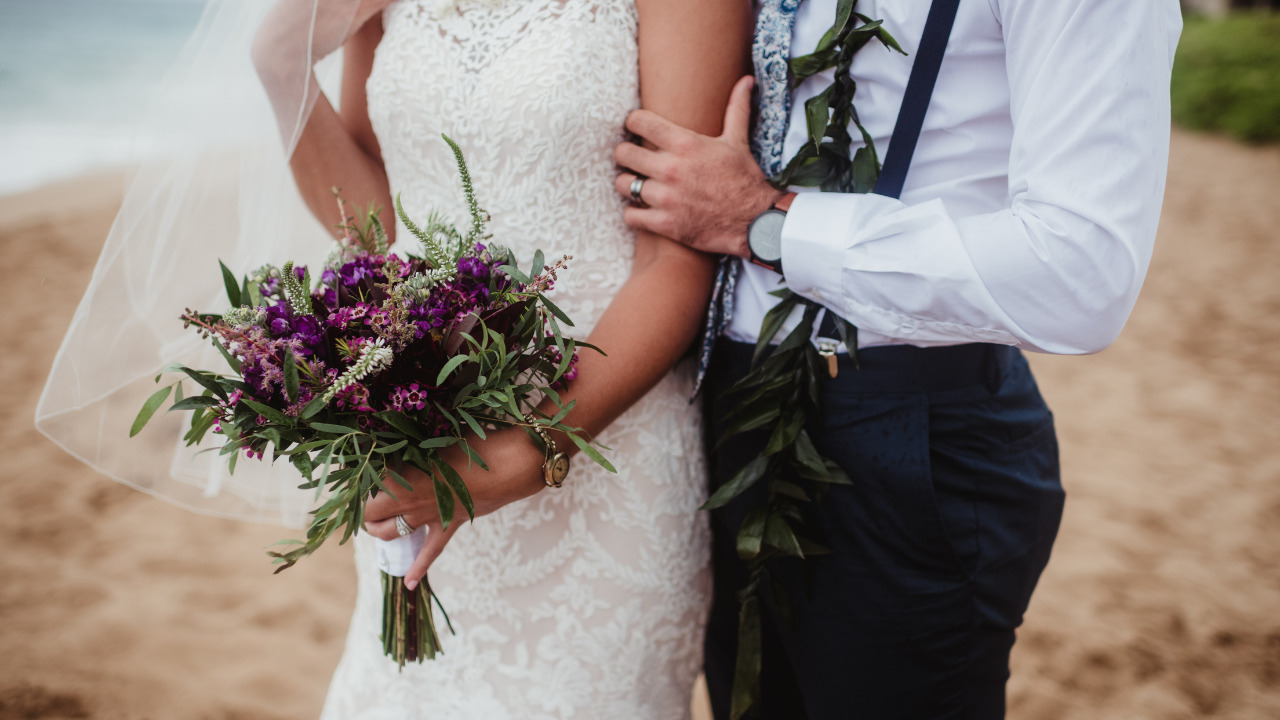Someone you know is getting married—so exciting! But you had no clue you’d have to do a little internet research before saying yes to the invite, did you? Don’t sweat it—we know the language and etiquette can be a bit tricky to decipher, but responding to a formal wedding invitation is actually way easier than you think. Here’s exactly how to handle it, step by step.
Reply On Time
First things first: Reply as soon as possible. The invitation will include an RSVP-by date, which you should absolutely follow. Mail your response by the given date (or well before, if you can). Essentially all of the couple’s other wedding details depend on the head count, so be an A-plus guest and let them know your status as promptly as you can.
Invitation Language, Decoded
Many formal, mailed invitations, along with the ceremony and reception information, will include a separate RSVP card with its own prestamped and addressed envelope. All you need to do is fill it out, slip it in the provided envelope and pop it in the mail. Here are a few examples.
RSVP Cards With a Preprinted Response
Your response may vary based on the format of the invitation. If there’s a preprinted template on the response card, your job is simply to fill in the blanks. A typical formal response card looks something like this:
The favor of a reply is requested by the first of June
M _____________________
_ accepts with pleasure
_ declines with regret
The “M” stands for the first letter of your title(s), such as Mr., Mrs., Ms. or Miss, followed by your name(s). Depending on your marital status, write on the designated line:
- Married couple: “Mr. and Mrs. John Doe” or “Mr. John and Mrs. Jane Doe”
- Married couple with different last names: “Mrs. Kim Williams and Mr. John Doe” (or vice versa)
- Single man: “Mr. John Doe
- Single woman: “Miss Jane Doe”
- Unmarried couple: “Miss Kim Williams and Mr. John Doe” (or vice versa)
Next, indicate whether or not you will or will not attend beside the options below. If you’re the only one to whom the invitation is addressed, you may put a check mark or write a number one on the space beside the proper response option. If you and your partner are both invited and both attending (or both declining) write the number two on the space beside the proper response option. If one of you is attending, but the other cannot, write a number one beside both options. The same format applies if your family is invited on one invitation. Write the number of people who accept and decline respectively.
RSVP Cards Without a Preprinted Response
Not every response card will have a preprinted template to fill in the blanks. In these cases, beneath the respond by date, you should write a brief note expressing your pleasure to attend (or regrets to decline) the event. For example:
“Ms. Kim Williams and Mr. John Doe will” (or “will not”) attend…” (and editorialize a bit if you like or are especially close to the couple and their families: “will happily attend”).
If you haven’t spoken to the to-be-weds recently, feel free to write your congratulations and how excited you are to celebrate along with your response.
Invitations With No Response Card
If the invitation doesn’t come with a response card, write your reply on nice stationery and use the same wording as the invitation. For example:
To accept:
“Ms. Kim Williams and Mr. John Doe accept with pleasure/the invitation of/Mr. and Mrs. Michael Livingston/for Saturday, the second of August/at five o’clock in the evening.”
To decline:
“Ms. Kim Williams/regrets that she is unable to accept/the kind invitation of/Mr. and Mrs. Michael Livingston/for Saturday, the second of August.” (No need to include the time on a regret, only the date).
If the invitation is more casual, but doesn’t include a response card, write a warm, informal note accepting or declining.
Response Card Etiquette to Remember
Don’t Forget Your Menu Preference
Some response cards also provide menu choices below the attendance options. If it’s just you, check off the dish you want. If you’re responding for your plus-one, family or partner, write everyone’s respective initials next to their preferred meals. This is important to do as the couple will use these numbers to account for everyone’s prefered meal and inform the caterer. (Plus, you’ll end up with the food actually like.)
You Can’t Add Extras
You should only RSVP for those to whom the invitation is specifically addressed. Do not RSVP for your children unless the envelope is addressed to “The Doe Family” or your children’s names are included on the inner invitation. The same goes for plus-ones. In addition, you may not bring a plus-one even if you were given the chance to bring one, but originally declined the option to do so on your response card.
You Can’t Swap Plus-Ones
Finally, remember that wedding invitations are non-transferable (these aren’t theater tickets). If you’re given a plus-one in an invitation addressed to “Miss Kim Williams and Guest,” you’re free to invite whomever you’d like as your date. However, if you and a specific plus-one are invited, (as in, the envelope addressed to “Miss Kim Williams and Mr. John Doe”), but your plus-one cannot attend (maybe they’re out of town that day, or you break up between receiving the invitation and going to the wedding), you can’t just invite someone else in their place. Everyone’s circumstances are different, so if you’re close to the couple, they might understand the situation and let bring you a date regardless—but let them make the first move in offering (aka don’t ask or assume). Otherwise, simply RSVP for one.
Read more handy guest etiquette and advice right here.
And find the couple’s registry here.



